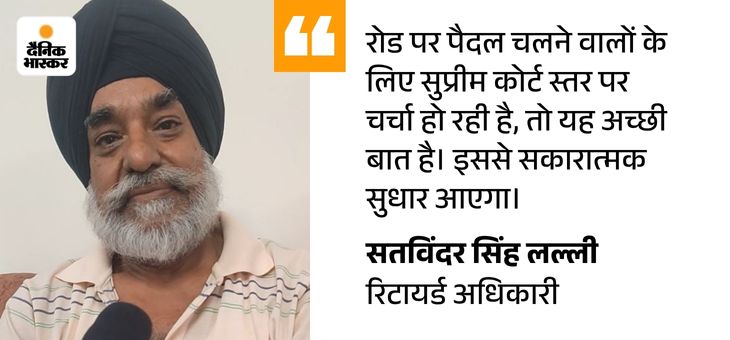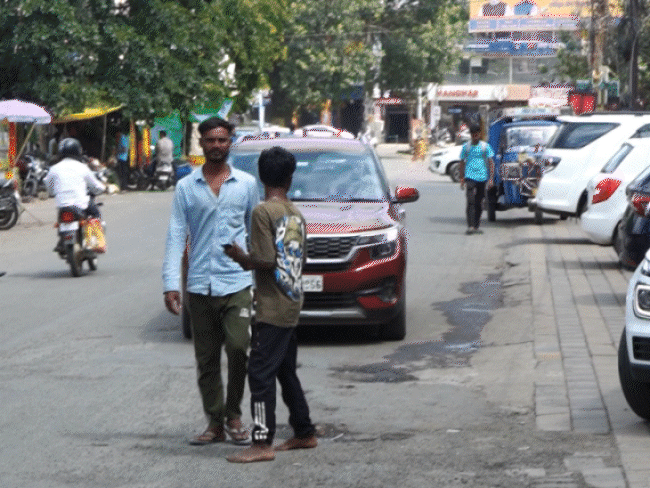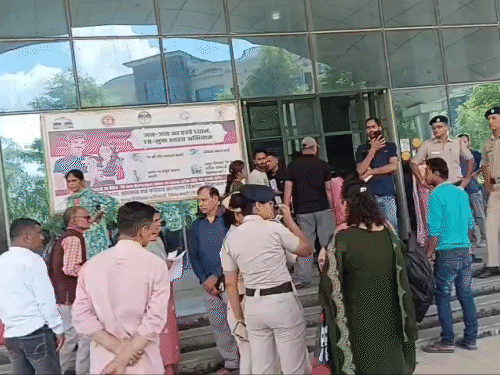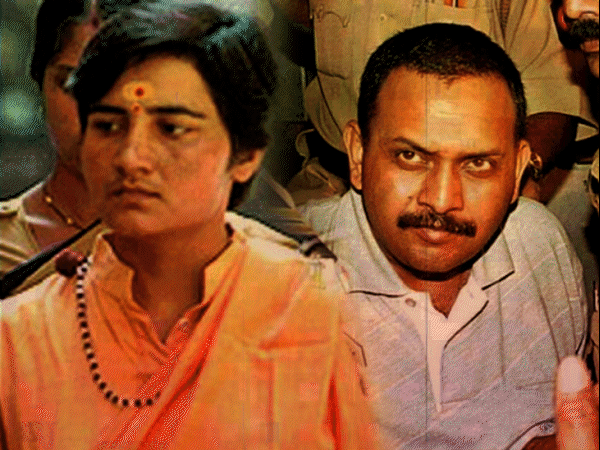According to the data of the Ministry of Road Transport, there are the highest number of people who lost their lives in road accidents after two wheelers.
We are taught from childhood to always walk on the road. This learning has become one of our habit in such a way that we follow this rule even while walking on the road, while this is wrong. The rules for left running on the road are for vehicles and not for pedestrians. road
,
The biggest threat to pedestrians is the biggest threat to pedestrians, walking back towards the vehicles on the road. Gyan Prakash, a social worker from Madhya Pradesh, has approached the Supreme Court about this deadly disturbance. In his petition, he has given data of people who died on the road. They have also asked why rules have not been made for those walking on the road in the country? How have people been repeating this mistake for the last 100 years?
While hearing his petition, the Supreme Court has issued a notice to the Union Ministry of Road Transport and Highways and ordered the reply within four weeks. The next hearing of the case will be held on 11 November. On this, Bhaskar spoke to the expert with the petitioner. Read, report …
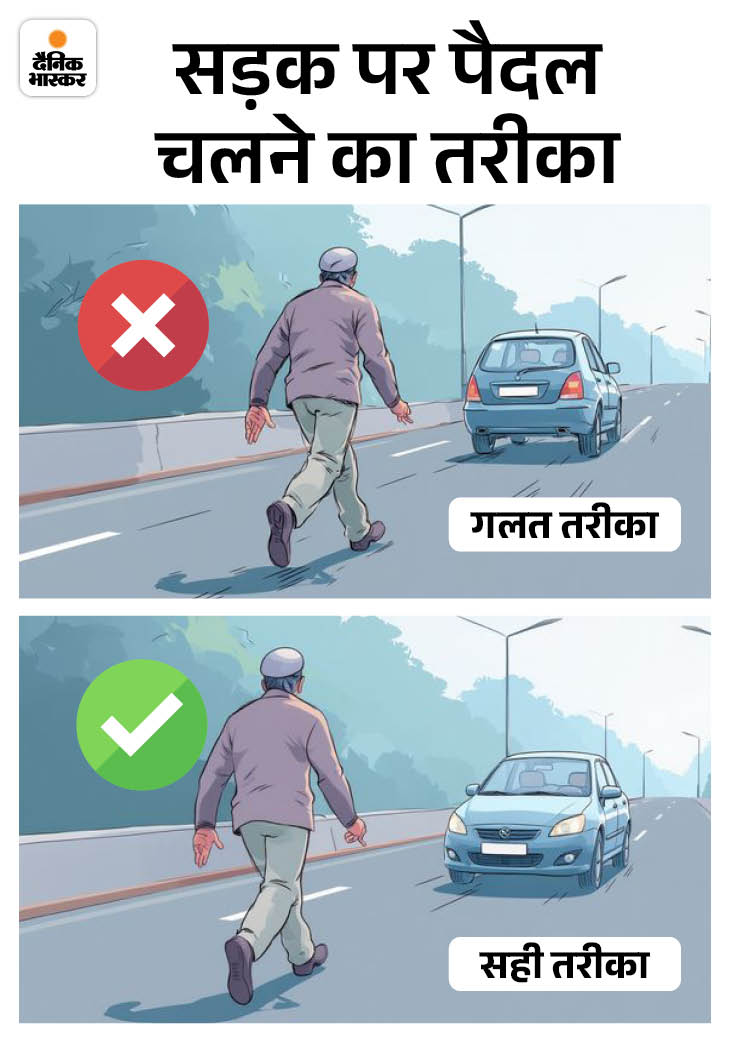
Understand from four cases, how the rule of left walk is proving to be fatal case 1: Nanuram Singhad, who guarded a vehicle showroom in Ratlam, died in a road accident on 24 August. Nanuram was going home on the Kharakhedi ringroad adjacent to the Mhow-Neemuch highway, when the bike coming from behind hit Nanuram. He died on the spot due to head injury.
Case 2: A Sadhvi walking on the road on the airport road in Indore was hit by a crane from behind. The elderly Sadhvi died on the spot. This incident took place on 31 July. The locals caught the driver of the crane and handed him over to the police.
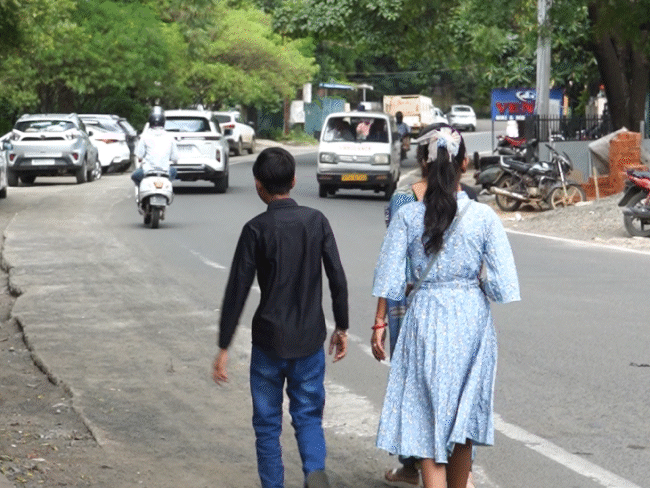
Most people walk to the left on the road, this is the wrong way. They do not see vehicles coming from behind.
Case 3: 75 -year -old Kunj Bihari Trivedi, a resident of Khaira Kala village of Chhatarpur, went to worship at Munna Adivasi of the village on September 24 at 10 am. Returning from there, a high speed motorcycle hit the elderly. The family took the elderly to the hospital in Bijawar. From there he was referred to Chhatarpur but the elderly died.
Case 4: On 14 June 2024 in Bhopal, Raghuveer Singh, father of Sanjay Singh Chauhan, a protocol officer of Vallabh Bhavan in Habibganj area, was hit by a speeding motorcycle. He died during treatment in the hospital. Raghuveer Singh went for a walk at night. The motorcycle rider hit him from behind.
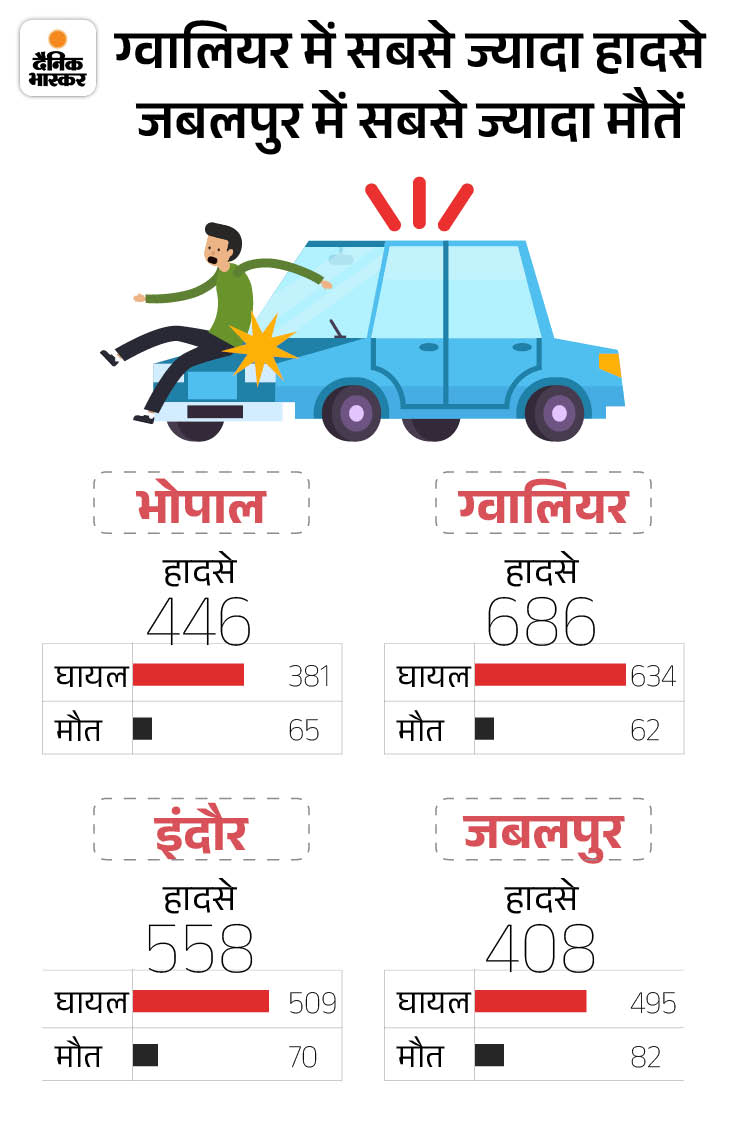
How did this ‘deadly mistake’ begin Gyan Prakash, a petitioner who took the matter to the Supreme Court, says that the root of this problem is hidden in a traffic sign of the British time. At that time, the rule of “Keep Left” was made for vehicles. When it was translated into Hindi, it was written- Essentially leave left.
According to knowledge light, the word ‘let’s’ created confusion. The pedestrians considered it a instruction for themselves, because there were no separate guidelines or signs on the streets for them. This rule made for vehicles became a habit of pedestrians. At that time there was less traffic on the roads, so the danger was also low.
As the vehicles increased, this habit proved to be a fatal mistake. When the pedestrian walks to the left on the road, the vehicles come from behind it. He neither realizes the speed of the vehicle nor his exact position. In such a situation, if there is a slight lapse of the driver, then the pedestrian does not even get a chance to recover.
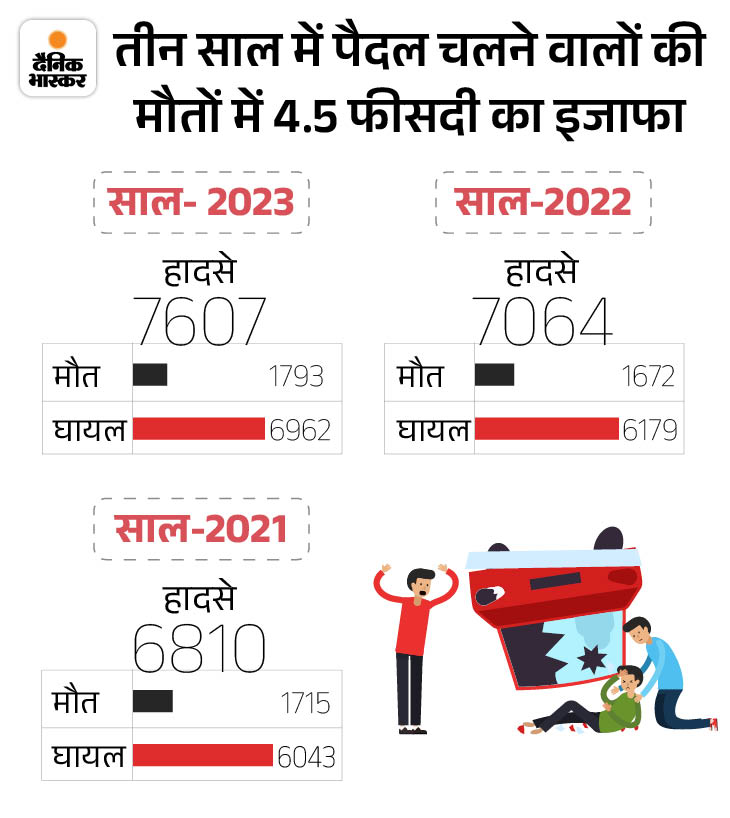
What is the rule around the world, why is India behind? Gyan Prakash states in his petition that there is no clear traffic law for pedestrians in India. Our Motor Vehicle Act, 1988 mainly focuses on motor vehicles while countries such as England, America, Japan and Malaysia have ‘Road Traffic Act’, which have clear rules for vehicles as well as pedestrians.
It is clearly written in the highway rule of England that if there is no pavement, then pedestrians should always walk towards the upcoming traffic i.e. to the right of the road. The same rule is applicable in Japan and America.
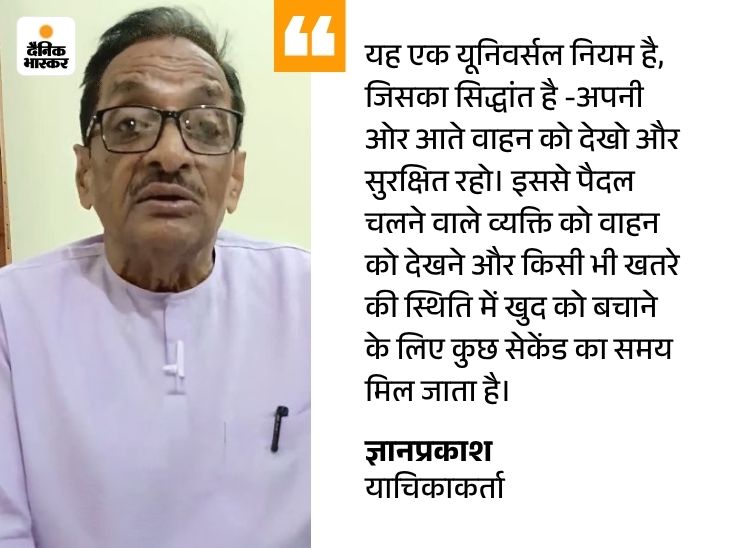
Gyan Prakash is fighting a fight since 1984 Gyan Prakash has been working to spread awareness on this issue for the last four decades. He also wrote a book called ‘Traffic Shiksha’ in 1984, in which the pedestrians advised to walk in front of vehicles. In the year 2018, on the petition of Gyan Prakash, the Supreme Court made a saree guard in all motorcycles and helmets for riding behind.
In the year 2019, he filed another petition and raised the question that who is responsible for traffic control on national highways? He argued that this responsibility is of the Center under the ‘Control of National Highway Land and Traffic Act’, but the Center has neither dedicated force nor any system for it.
Demand through petition of knowledge light
- The central government should improve traffic signs across the country and clarify that pedestrians always walk in the opposite direction of vehicles.
- Apparent instructions should be issued for all the users of the road including pedestrians.
- A ‘highway safety code’ should be created, which includes traffic rules for every class.
On his petition, the Supreme Court has issued a notice to the Center, which was accepted by the Additional Solicitor General.
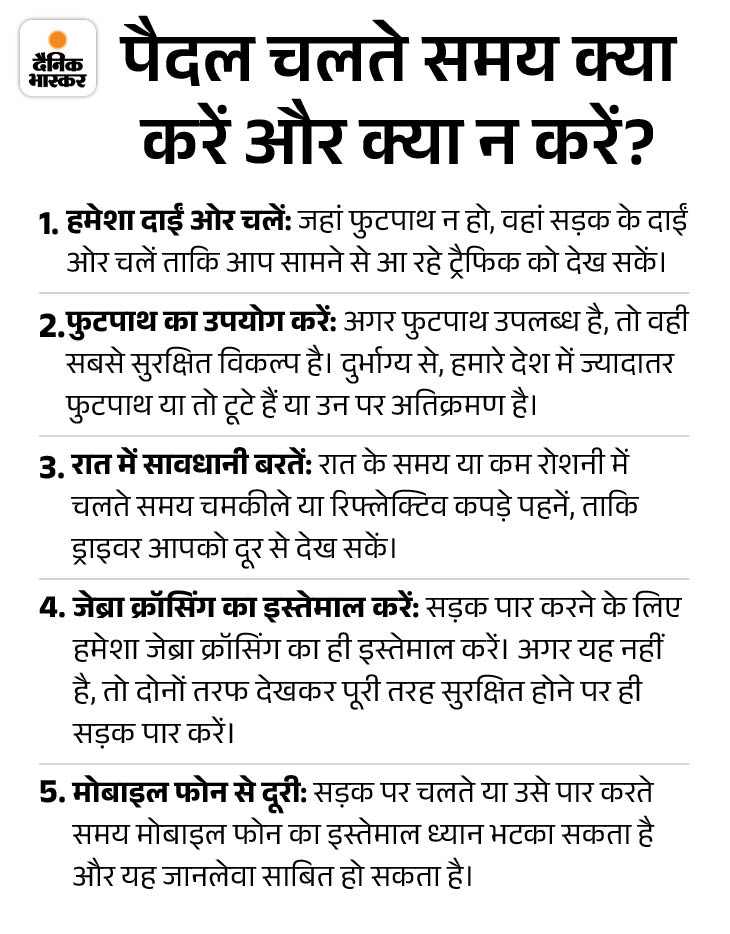
Motor Vehicle Act for trains and not for pedestrians According to retired officer Satwinder Singh Lalli, the Motor Vehicle Act gives directions to vehicles but walking on the left side of the road or on the right side, it is not written anywhere. RRR (Rules of Road Regulation) was made under the Motor Vehicle Act.
There was a provision that whoever uses the road, whether bicycle or pedestrians, will follow all traffic rules and police orders. It was later removed and driving regulation has replaced it. These are also only for vehicles, now there are no rules for pedestrians.
Till there is no clarity in the law, we have to take responsibility for our security ourselves. Where there are no sidewalks, there should be a head on the right side vehicles. However, the government has the right to make rules in the Motor Vehicle Act.
